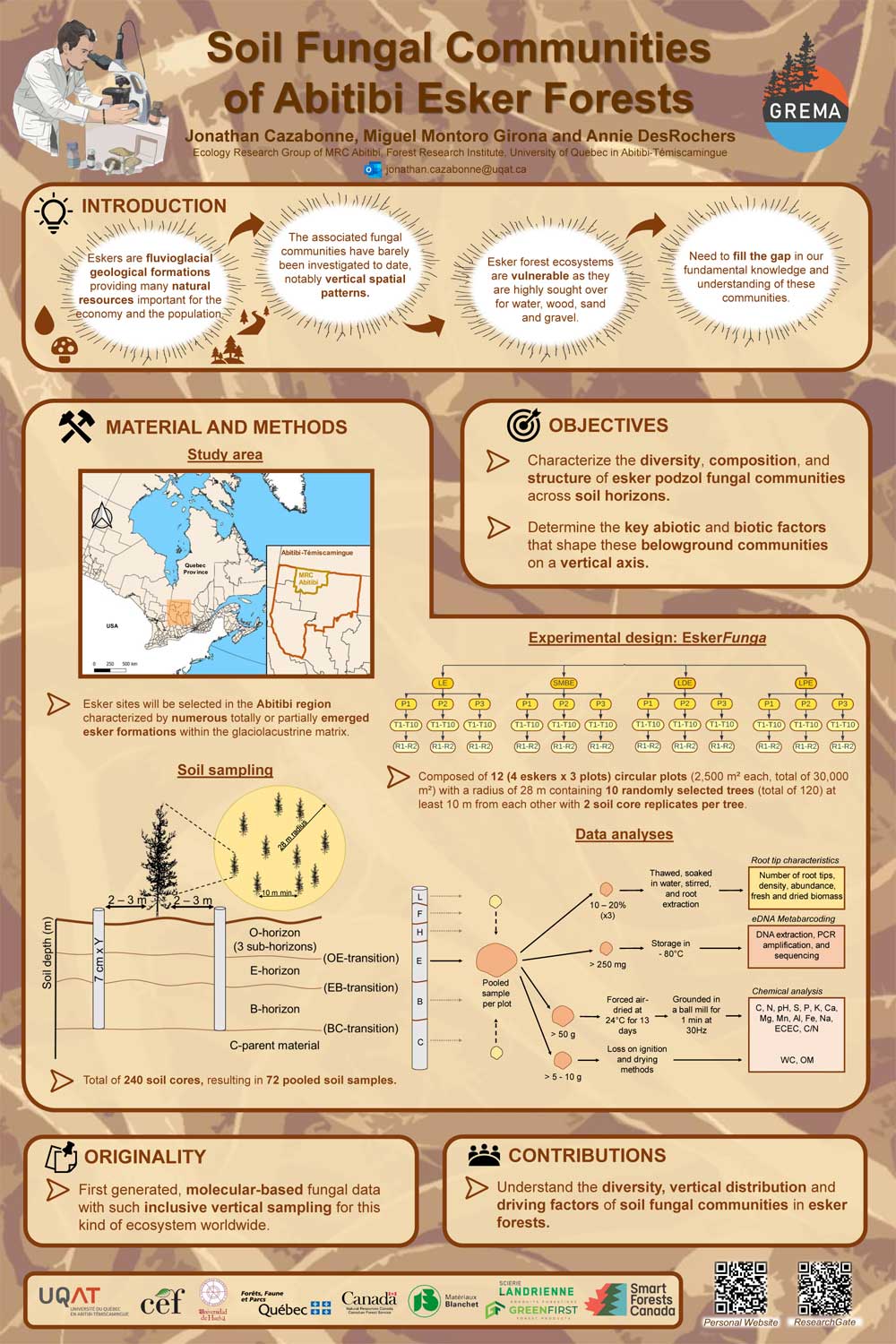
Eskers are fluvioglacial geological providing many natural resources important for the economy and the population. These ecosystems, and the associated fungi, seem unique in the world and have never been investigated to date. They also remain vulnerable as they are highly sought over for wood, sand, and gravel. Our study aims to characterize the diversity, composition, and structure of soil fungal communities of esker forests, as well as evaluate their distribution across podzol horizons, from functional and taxonomic levels, and evaluate its environmental driving factors. Esker podzols represent stressed environments in terms of low nutrient and water availability. As a result, plant species require symbiotic associations with fungi to thrive in harsh edaphic conditions. Moreover, Jack pine forests found on eskers seem to harbor a different fungal diversity compared to other nearby stands on clay soil. Our hypothesis is that soil fungal communities are different across both soil horizons and types and that these vertical and horizontal differences in fungal composition are mainly driven by the magnitude of differences in soil chemistry and the presence of different tree species. Our study will be held in the Abitibi region. For the intra-soil scale, a global horizon sampling campaign will be carried out. For the inter-soil scale, soil fungi from esker and clay podzols, as well as from sites with a differential vegetation composition will be characterized using DNA metabarcoding. We expect soil fungal communities to show a relationship between soil chemistry and phytobiota on both scales. This project is the first molecular-based study to assess the unique soil fungal diversity of esker forests. It will help us better understand the key role of soil fungi in the functioning of esker forests and provide arguments toward a more fungi-focused forest management perspective.

